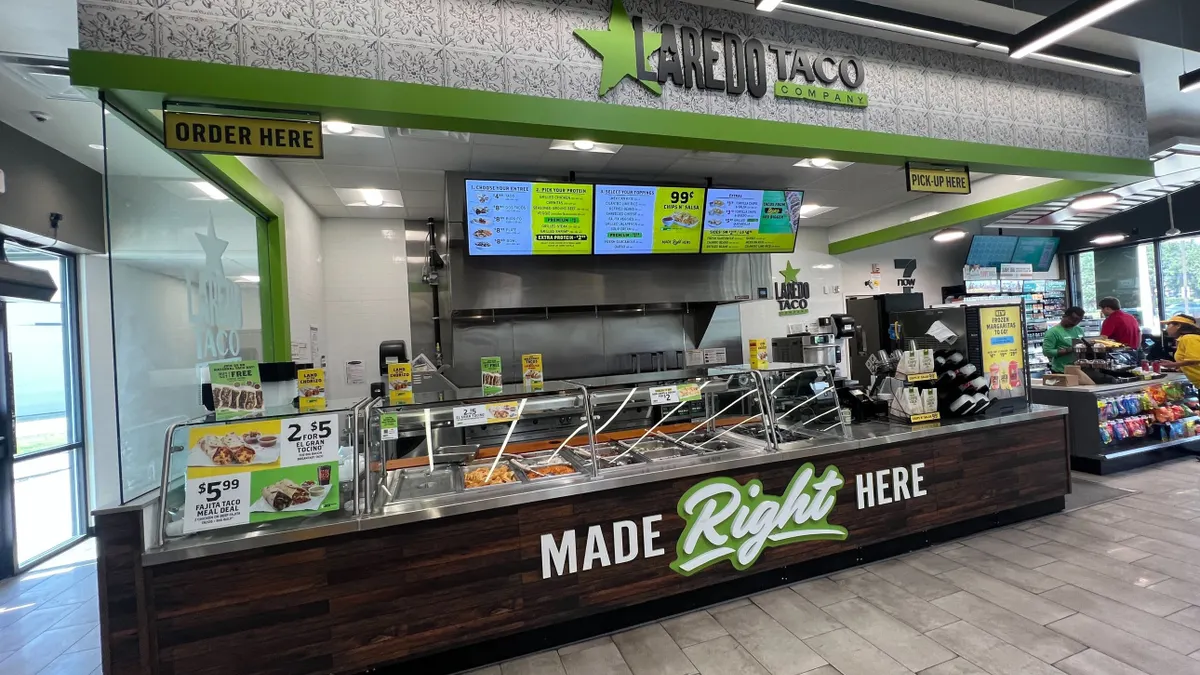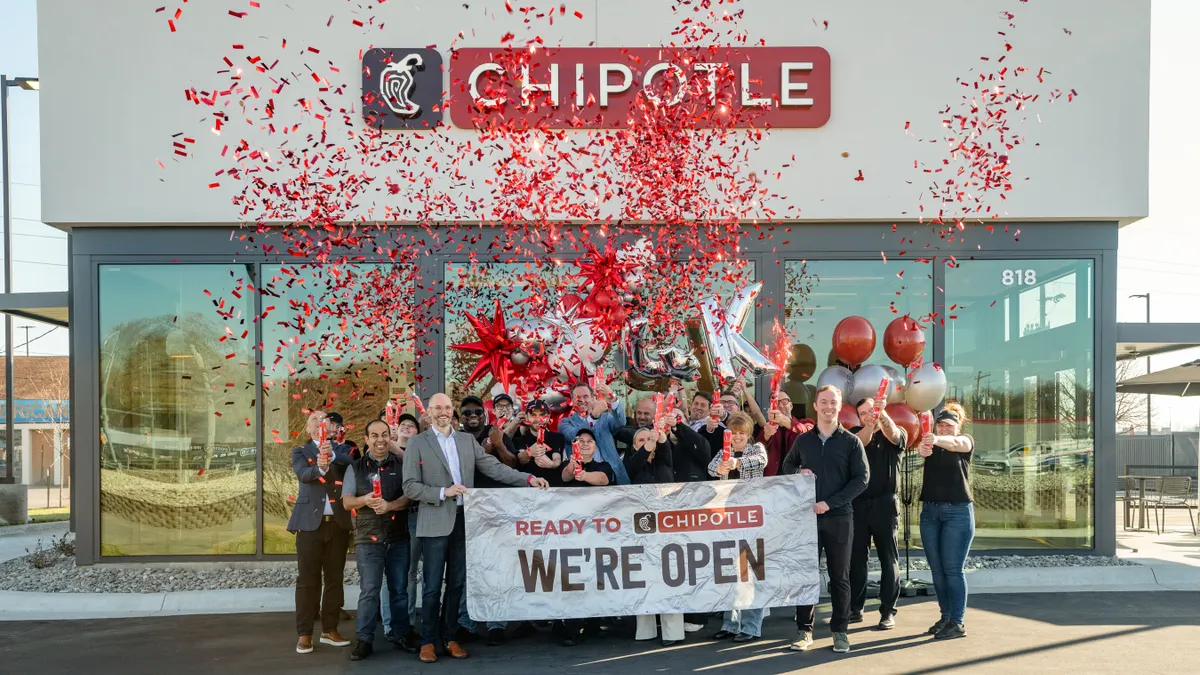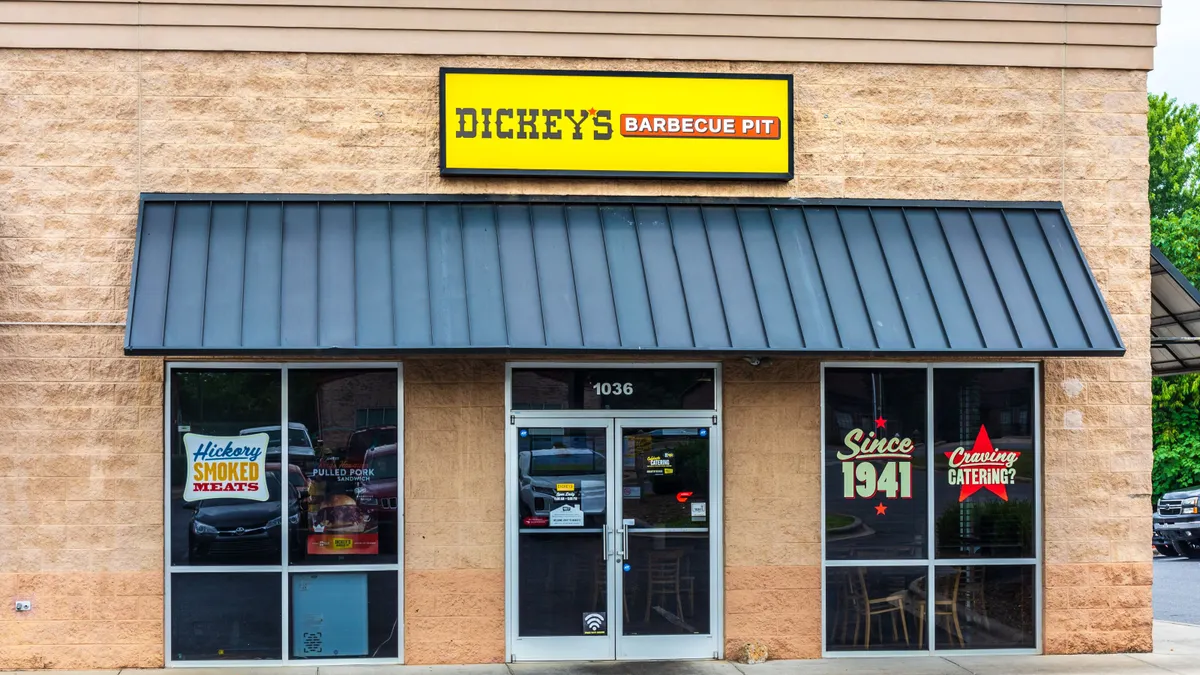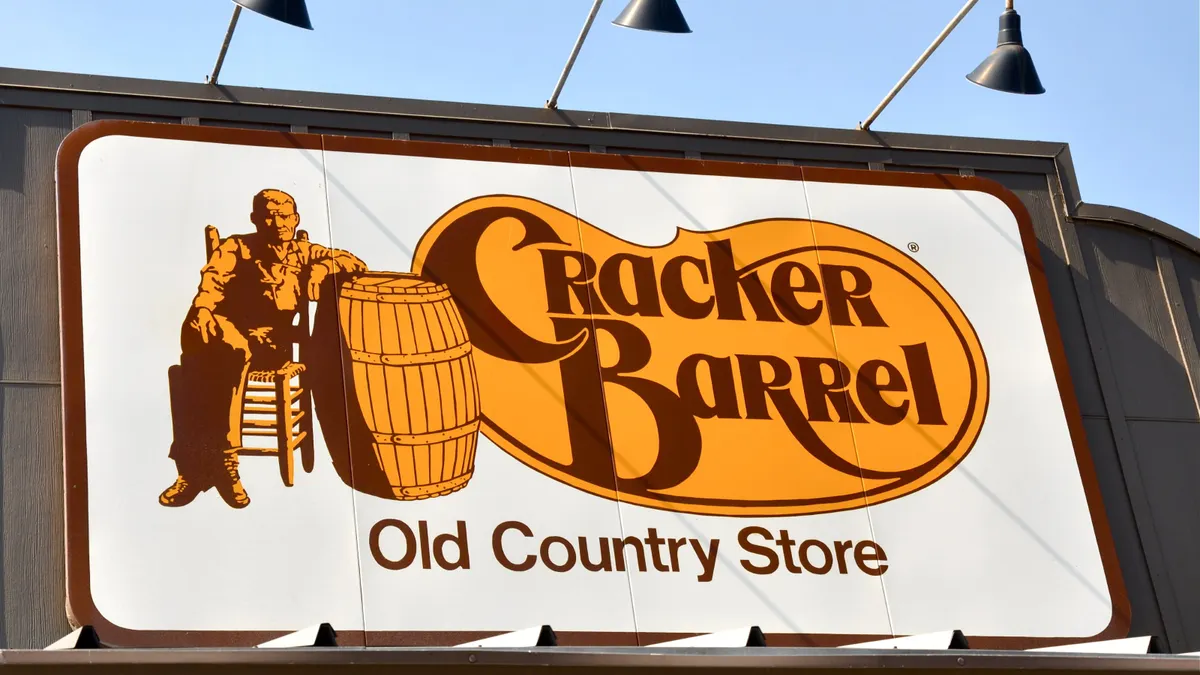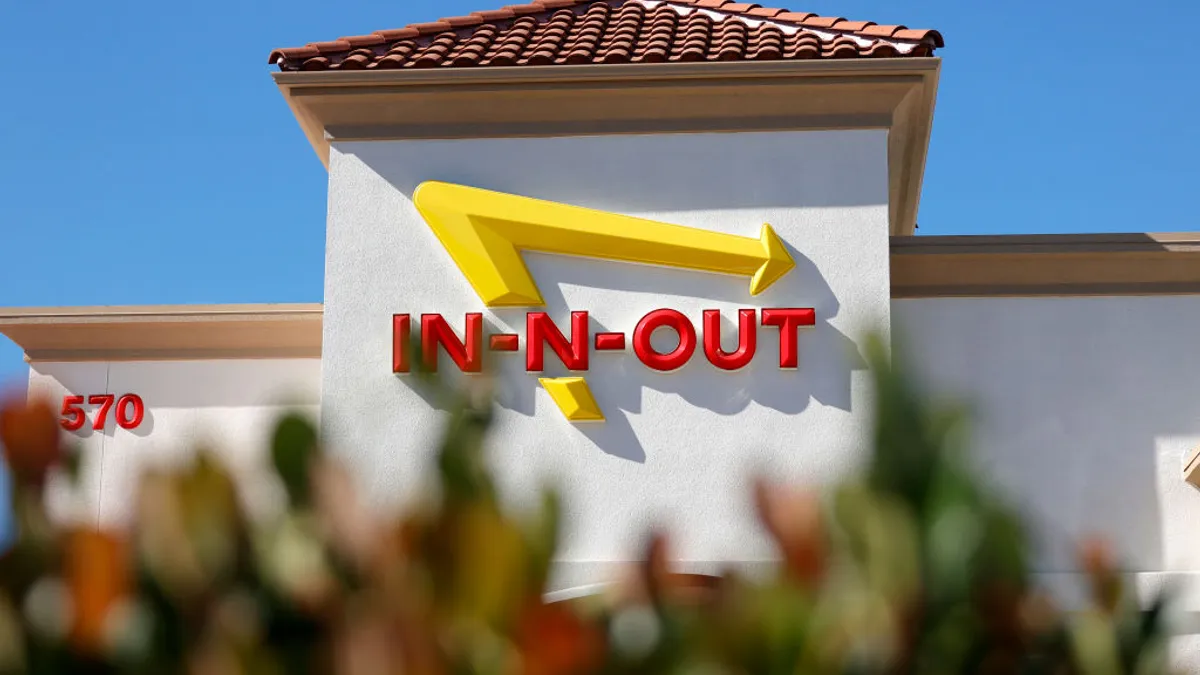Last week, the Treasury Department and Small Business Administration released a streamlined loan forgiveness application for Payment Protection Program funding, addressing critics’ concerns that the filing process was unnecessarily complicated for restaurants that are under unprecedented economic pressure.
Restaurant operators that didn’t reduce employee wages by more than 25%, didn’t cut back staff hours and operators that “experienced reductions in business activity as a result of health directives related to COVID-19” and didn’t slash employee pay by more than 25% are now qualified for the new EZ application. The form is two pages long, half the length of the Full Forgiveness Form, and requires less documentation and fewer calculations.
It’s the latest tweak to ever-evolving PPP standards, and could give restaurants extra breathing room as they navigate the program’s red tape.
“The questions we’re getting now [are] more about the process of forgiveness,” Roger Weber, market president of CorTrust Bank in Sioux Falls, South Dakota, told Restaurant Dive. “Right now, someone with a $2,000 loan has to do the same process as someone [with a] $2 million loan….There is a number that I would hope people could agree upon that we simplify the forgiveness portion of this process… I know independent community bankers are pushing for $1 million and under.”
Restaurants that have received PPP funding in the first or second round already scored a big win on June 4, when President Donald Trump signed the Paycheck Protection Program Flexibility Act into law, but Weber worries that the measure is a stopgap, not a true fix.
More cash for fixed costs
The law reduces the percentage of PPP funds restaurants are required to spend on payroll from 75% to 60% and extends the time period to use the funds from 8 weeks to 24 weeks. Restaurants also have five years to pay back their loan at 1% interest if they do not qualify for forgiveness at the end of their loan term. Twenty-five percent of the funding can also be put toward fixed costs like rent, utilities and business mortgage interest — costs that have been top of mind for restaurants struggling to balance the loan’s initial payroll requirements with keeping their lights on.
“I think it has a huge impact for [restaurants] to be able to number one, use it. Number two, they have a higher likelihood of forgiveness. And number three, it gives them access to that other 25% [of funding] to help support rent and utilities,” Weber said. “What the wild card is, is 24 weeks is a long time, but our present environment is unknown. It buys [restaurants] time, but I don’t think it’s a fix. Because unless people get comfortable coming back out to a restaurant with present rent levels and utility costs and labor costs, the model just doesn’t work. You have to be running at full capacity.”
Mooyah Burgers, Fries and Shakes VP of Operations Mike Sebazco, who helped land 10% of franchisees loans during round one of PPP and 100% during round two, told Restaurant Dive that the program’s new funding ratios are still challenging.
"Twenty-five percent is not enough to cover your rent and your utilities and your interest payments… rent is probably the largest single factor you have other than food costs and payroll. It would leave you short if you’re operating at a loss. …We have been able to absorb the hits more than a mom-and-pop organization would have been."

Mike Sebazco
VP of operations, Mooyah Burgers, Fries and Shakes
“Twenty-five percent is not enough to cover your rent and your utilities and your interest payments… rent is probably the largest single factor you have other than food costs and payroll,” he said. “It would leave you short if you’re operating at a loss. …We have been able to absorb the hits more than a mom-and-pop organization would have been.”
These changes may also come too late for desperate restaurants that cashed in on the loans without an expectation of forgiveness because of the original stringent requirements, Sebazco added.
“If you were in a cash-poor situation and you were willing to pay a percentage back and not have it fully forgiven because you were so cash-strapped that you bought food with that money or you had a significant repair that you were saddled with, the 60% [payroll] threshold is now a cliff,” he said. “If you don’t attain 60%, none of it’s forgiven. Now granted you have five years to pay it back at an extremely favorable interest rate, but man that’s a large disparity.”
Industry groups still pushing for aid tailored to restaurants
Last Wednesday, Sen. Roger Wicker and Rep. Earl Blumenauer introduced the Restaurants Act, a $120 billion relief package designed for independent restaurants specifically. The bill follows calls for industry-specific aid from both the Independent Restaurant Coalition and the National Restaurant Association, which have said since March the PPP’s requirements are at odds with the structure of thin-margined restaurant operations.
“The legislation has strong bipartisan support,” Blumenauer said during a national briefing call led by IRC. “The support goes all the way to the White House,” added Wicker, “and there’s a strong likelihood the legislation will be part of Phase 4 coronavirus recovery.”
The proposed legislation comes less than two weeks before PPP’s loan application window is set to close on June 30. As this deadline looms, economic consulting firm Compass Lexecon predicts that 85% of independent restaurants could close by the end of 2020 if Congress doesn’t provide direct relief. This direct aid could also give the economy a $271 billion shot in the arm and shave down U.S. unemployment by 2.4%, according to the firm.
"Senator Wicker and Representative Blumenauer’s bipartisan Restaurant Revitalization Fund has given America’s 500,000 independent restaurants a day of hope,” IRC said in a statement emailed to Restaurant Dive. “Independent restaurants that had limited openings are now closing again. Many still wait for Paycheck Protection Program loans and are accumulating more and more debt in the process … The revitalization fund is a smart investment that would contribute more than two dollars to the economy for every one dollar spent and ensure millions of Americans have a shot at keeping their job.”
NRA echoed IRC’s praise for the Restaurants Act, noting that the bill covers many of the proposals it shared with Congress on March 18 following the start of municipal dining room closures.
“Right now, restaurants across the country are struggling on every front,” NRA’s EVP of Public Affairs Sean Kennedy said in a statement emailed to Restaurant Dive. “They are trying to figure out how to make ends meet when they are only allowed to fill 25-50% of their seats. They owe rent and have invoices for food that are past due. They are paying extraordinary prices for the safety measures they want to put in their dining rooms to keep their workers and patrons safe. And they are wondering how they will ever find the money to pay for it all.”
This fear has kept restaurants that have qualified for PPP on the sidelines out of fear that accruing debt because they allocated their loans funds incorrectly could kill their business if it survives the tumult of the novel coronavirus.
“Restaurants weren’t using the funds,” Weber said. “They just didn’t have the salary expense. … It made them more cautious to take out of the salary percentage they could use to pay rent and utilities because they couldn’t really stabilize the employee piece.”
"Right now, restaurants across the country are struggling on every front. They are trying to figure out how to make ends meet when they are only allowed to fill 25-50% of their seats. They owe rent and have invoices for food that are past due. They are paying extraordinary prices for the safety measures they want to put in their dining rooms to keep their workers and patrons safe. And they are wondering how they will ever find the money to pay for it all."

Sean Kennedy
EVP of public affairs, National Restaurant Association
But unemployment benefits, which many restaurants report has dissuaded employees from returning to work because they earn more on government aid than they do at their hourly jobs, is another obstacle that remains despite recent PPP amendments.
“I would say about 95% of our franchisees are going to be fine [meeting 60% payroll]. What is still a concern is the full-time equivalence. We’re competing with unemployment to get employees back,” Sebazco said. He added that in some cases when the chain has reported employees that have not returned to work to state labor offices, some have chosen to work elsewhere.
Old problems and murky results
Mooyah was careful to develop cashflow plans for all of its 80 franchised restaurants to fit their individual needs and help operators stay afloat, taking “everyone through the worst-case scenario” of what PPP could entail for them, Sebazco said.
“We don’t have access to the capital markets, we’re not publicly traded,” Sebazco said. “We had everybody applying, and we were trying to stay local with their banks, and we were shut out [in round one]. Then we partnered with a national lender, ApplePie Capital, and they changed our strategies a little bit on round two for existing applications and were able to get everyone 100% funded.”
Still, reaching the necessary full-time equivalence amid moving goal posts has been challenging, even with the changes under the PPP Flexibility Act, he said.
Meeting minimum payroll requirements under PPP has been the biggest pain point for restaurant borrowers since round one of the program launched. Amar Kapadia, partner of Troop and partner and CFO of Revival Brewing in Rhode Island, told Restaurant Dive that he and his business partners worked with their CPA and the vice president of their bank to create a staggered employment plan for the eight-week period of round one for Troop restaurant.
“We calculated what the full-time equivalent was required to meet the plan’s forgiveness eligibility, and then we figured out how many hours is that over the eight-week time frame. And then we figured out if we actually stagger it a little bit in the beginning and then go heavier in the back-end, that’s better for us,” Kapadia said.
During week one, Troop brought back 11 full-time employees on payroll, including the owners that stayed working the full eight weeks, then added an additional five full-time employees the second week before putting a total of 25 workers on temporary full-time in the fourth week.
Kapadia suggests that restaurants struggling to interpret PPP’s terms try to make a game plan with the bank they’re working with and speak with state SBA representatives for guidance and further education about the program’s requirements.
While some restaurants are still on the fence about applying for and using PPP funds near the June 30 deadline, questions remain about how the loans have worked for restaurants to date since the Trump administration has not released SBA loan data.
“Without transparency as to which businesses received the taxpayer funded Paycheck Protection Program, it will be impossible to assess whether the program actually achieved its goals of helping small businesses and maintaining employment during the COVID crisis,” Amanda Ballantyne, executive director of small business coalition Main Street Alliance, said in a statement emailed to Restaurant Dive on June 15. “It is ridiculous that the Trump Administration would withhold this information and suggests the possibility that they have something to hide…The administration must release this information immediately, if they want to prioritize equitable results. It is a vital step to rectifying the major design flaws of this program and highlighting where we need to redouble our efforts in supporting an economic recovery.”
For now, restaurants continue to hold out for aid that’s more tailored to the realities of their industry.
“We’re in dire need of a halftime speech because we’re only halfway through [the year]... if you look at what’s going on in this country, it’s a heck of a time,” Sebazco said. “We had crisis response stuff written, and we threw those playbooks away first thing. It’s been nothing like we were ever prepared to work with.”







